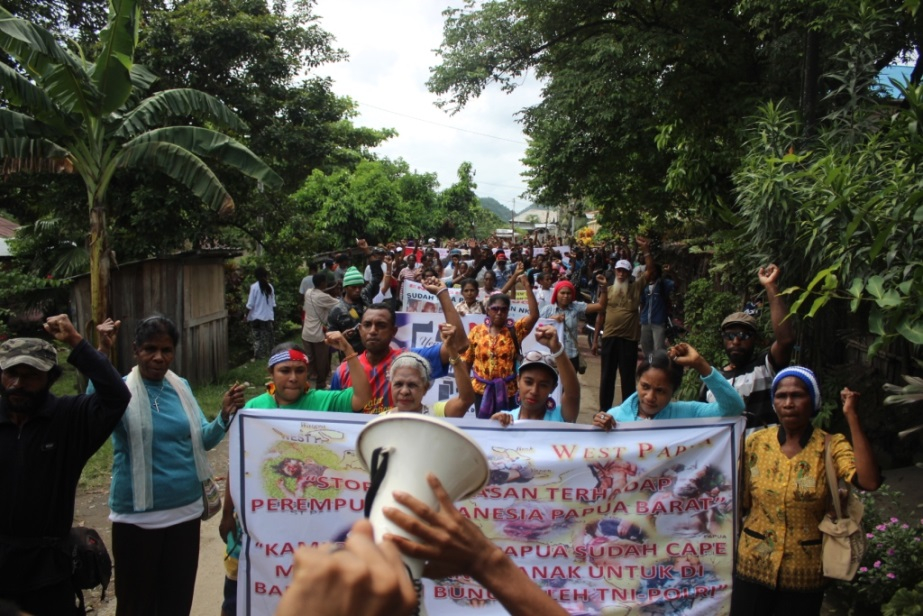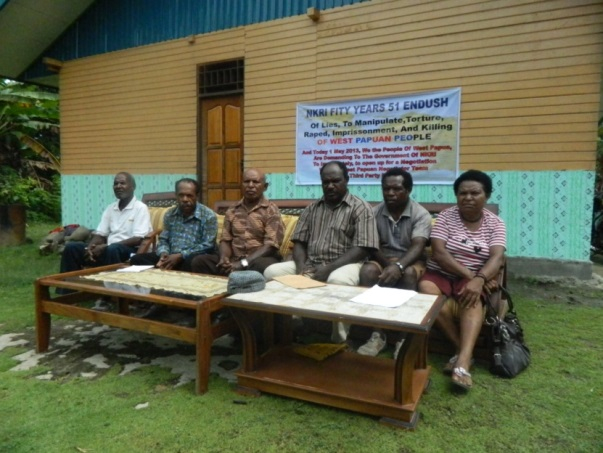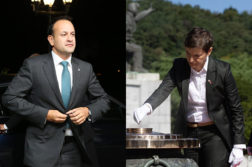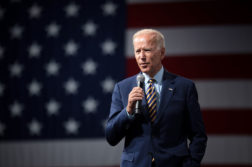For many people around the world May Day is a time to celebrate how ordinary workers won the right to the eight-hour working day. In West Papua it's a day of national mourning.
Fifty years ago, on 1 May 1963, the United Nations pulled out of West Papua to allow the Indonesian government to rule the territory. Fifty years later the Indonesian security forces are still in West Papua, and locals are still demanding a free and fair referendum on West Papua’s political status.
Here’s a rundown of how West Papuans across the country commemorated the day.
Sorong
According to human rights advocates from Elsham (the Institute for the Study and Advocacy of Human Rights in West Papua) Indonesian security forces shot dead two Papuan protesters in Sorong and wounded two others. Elsham report that shortly after 10pm on Tuesday night, police from Aimas Police station, together with Indonesian soldiers, arrived at the home of Ishak Klaibin, 49, where Papuan activists were holding a meeting to prepare for demonstrations the following day. According to Klaibin, a number of Papuans got into an argument with the police and soldiers, who shot dead Abner Malagawak and Thomas Blesia, both 22 years old. Malagawak was shot in the shoulder while Blesia was shot in the back of the head. Three other people, Salomina Klaibin, 31, Herman Lokmen, 18, and Andreas Safisa, 24, were wounded in the attack.

Jayapura
Despite the killing of Malagawak and Blesia in Sorong, Papuans from across the country continued with planned demonstrations. The Indonesian police, military and recently inaugurated Papuan Governor, Lukas Enembe, had refused to grant official permission for peaceful demonstrations.
In Jayapura, the capital of West Papua, the demonstration was organised by the West Papuan National Parliament and led by Buchtar Tabuni. The West Papua National Committee (KNPB), West Papua National Authority and Melanesian Women of Papua all came together to support the protest.
The activists gathered outside the university student dormitory, Asrama Nayak, and proceeded to march towards Abepura, a university suburb in Jayapura. Five hundred West Papuan activists marched, carrying drums, flutes and banners. They sang “Free Papua” and held banners declaring “Fifty years of lies, manipulation, torture and killing”, “Not Integration; Annexation”, “The Indonesian occupation is illegal”, “Enough is Enough” and “Stop violence against Papuan women”. Many of the banners were decorated with the photos of Papuan victims of torture by the Indonesian security forces.
 Elsham, who were monitoring the demonstration, reported that as the protesters passed the military command at Padang Bulan, soldiers fired their weapons seven times into the air.
Elsham, who were monitoring the demonstration, reported that as the protesters passed the military command at Padang Bulan, soldiers fired their weapons seven times into the air.
Local citizen journalists reporting from the protest told New Matilda that several activists walking on the street in Jayapura were seized by security personnel, forcibly loaded into a military truck and driven some 30 kilometres away to an army base at the foot of Mt Cyclops. The activists later managed to escape when the truck was forced to stop near Sentani.
Papuan citizen journalists also told New Matilda that during the march in Jayapura Indonesian police attempted to arrest Markus Yenu, a well-known protest leader from Manokwari. However, they were prevented from doing so when activists positioned themselves between Yenu and the police. According to eyewitnesses, Yenu promptly disappeared into the crowd and is now reported to have gone into hiding.
According to West Papuan journalist Okto Pogau writing for Suara Papua (The Voice of Papua), water cannons, tear gas cannons and hundreds of heavily armed police and military were positioned in several sites between the centre of Jayapura and Sentani, a further 50 kilometres away. In Sentani, beside the memorial site of West Papuan independence leader Theys Eluay, and in Kampung Harapan (the village of hope), a pro-independence stronghold, there was a heavy police and military presence.
Despite the presence of the security forces, peaceful demonstrations, speeches by KNPB chairman Viktor Yeimo and a worship service all went ahead in Sentani. However, the security forces did manage to break up a KNPB demonstration in Waena, an outlying suburb of Jayapura.
In Jayapura, Indonesian police, soldiers and citizens organised a counter-demonstration. They drove through the streets of Jayapura in vehicles emblazoned with giant Indonesian flags, honking their horns.
Biak
In Biak, 40 pro-independence activists led by Oktofianus Warnares raised the West Papuan "morning star" flag. According to Elsham staff in Biak the demonstration was forcibly dispersed by police and an unknown number of activists were arrested. Also in Biak, the West Papua National Committee, whose activists were recently accused of bomb-making — a charge they deny — led a prayer service. Local KNPB activist, Mnumumes, said that “1 May is the day that colonialism entered West Papua and West Papua continues to be colonised until today”.
Fak-Fak
In Fak-Fak, a town on the north-west coast, Elsham staff report that the morning star flag was raised at three locations: at the Inpres Wagom Mountain primary school, at the Second middle school and in front of the North Fak-Fak district office.
Paniai
In Nabire, the district capital of Paniai, human rights defenders and church workers, under the banner of the Coalition of Papuan People from Nabire, held a press conference commemorating the 50 year anniversary of West Papua’s annexation by the Indonesian state.
The speakers at the press conference declared that “West Papua’s incorporation into Indonesia, the Act of Free Choice in 1969 (a sham referendum), Special Autonomy, the Unit for the Acceleration of Development in West Papua are all problems that remained unresolved".
 The speakers, who included Reverend Esebius Pigai, Daniel Zonggenau (A tribal leader from Meepako), Theo Mirip (a senior chief from the Nduga tribe), Pina Jagani (a Papuan woman’s leader), Frans Madai (a youth leader) and Yones Douw (a human rights activist), dismissed "Special Autonomy Plus", a recently announced policy package from Indonesian President Susilo Bambang Yudhuyono. Douw and the other Papuan leaders in Nabire demanded that “the Indonesian government immediately begin political talks with the Papuan people, mediated by an international third party”.
The speakers, who included Reverend Esebius Pigai, Daniel Zonggenau (A tribal leader from Meepako), Theo Mirip (a senior chief from the Nduga tribe), Pina Jagani (a Papuan woman’s leader), Frans Madai (a youth leader) and Yones Douw (a human rights activist), dismissed "Special Autonomy Plus", a recently announced policy package from Indonesian President Susilo Bambang Yudhuyono. Douw and the other Papuan leaders in Nabire demanded that “the Indonesian government immediately begin political talks with the Papuan people, mediated by an international third party”.
Timika
Viktor Mambor from the independent West Papuan media outlet Jubi, reported on events in Timika. According to Mambor, Papuans raised the morning star flag in front of the new Mimika Presidential primary school. The protest was dispersed by police shortly afterwards. Mimika Police Chief Adjunct Senior Commissioner Rontini Jeremias, quoted by the Antara news agency on Wednesday, said that 10 residents were arrested and a morning star flag, a betel nut tree flag pole and rope were seized.
"We follow the rules of the state, not the citizen’s rules," said Commissioner Rontini.
Benny Pakage, a human rights activist from Timika/Mimika said that police detained 15 people. Pakage also said a number of security officers were hit, but that no one was killed.
Beyond West Papua
There were also reports of demonstrations by Papuans in Java and solidarity demonstrations as far away as Noumea, New Caledonia, where the National Kanaky Socialist Liberation Front (FLNKS) has backed West Papua’s call for a seat at the table of the Melanesian Spearhead Group.
One thing is certain: protest in West Papua shows no sign of letting up. As the Indonesian government continues to refuse to negotiate on the issue, West Papua becomes a bigger political problem.
Donate To New Matilda
New Matilda is a small, independent media outlet. We survive through reader contributions, and never losing a lawsuit. If you got something from this article, giving something back helps us to continue speaking truth to power. Every little bit counts.



